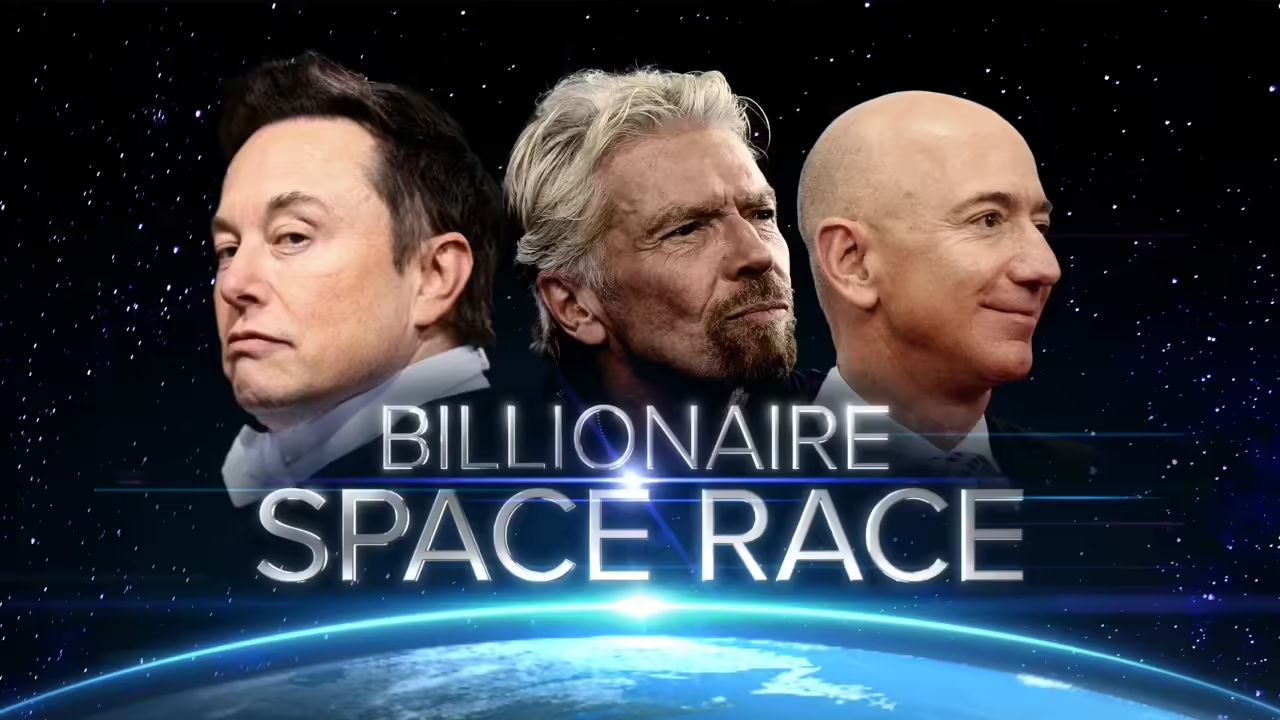
In the vast expanse of the cosmos, a new era of exploration has dawned. It’s not led solely by national space agencies, but increasingly by private companies driven by visionaries like Elon Musk and Jeff Bezos.
A Brief History of Private Space Exploration
The story of private space exploration is one that has gained momentum in recent decades but has its roots in the pioneering spirit of the 20th century. While governments, particularly the United States and the Soviet Union, dominated early space exploration, private entities began to emerge as significant players.
The 1980s saw the launch of the first privately developed rocket, Conestoga 1, by Space Services Inc. Though it ended in failure, it marked a significant milestone. Subsequent years witnessed the establishment of companies like Orbital Sciences Corporation, which contributed to satellite deployment and cargo resupply missions to the International Space Station (ISS).
The true turning point came in the early 21st century with the founding of SpaceX by Elon Musk in 2002. Musk’s audacious goal of reducing space travel costs and ultimately enabling human colonization of Mars captured global attention. SpaceX’s accomplishments, from launching the Falcon 1 to the development of reusable rockets, redefined what was possible in the realm of private space exploration.
Parallelly, Jeff Bezos founded Blue Origin in 2000, focusing on suborbital tourism and the development of reusable rocket technology. Blue Origin’s New Shepard spacecraft, with its multiple successful suborbital flights, showcased the company’s commitment to sustainable access to space.
The Significance of Private Enterprise in Space Exploration
The emergence of private space exploration carries profound implications for the future of humanity’s journey beyond Earth. Several factors underscore the importance of private initiatives in this field:
Innovation and Cost Efficiency: Private companies, unencumbered by bureaucratic constraints, can innovate rapidly and operate cost-effectively. SpaceX’s reusability efforts, for instance, have significantly lowered launch costs, making space more accessible.
Competition: Healthy competition among private players fosters rapid technological advancements and drives down prices. The rivalry between SpaceX and Blue Origin has pushed both companies to achieve remarkable feats.
Commercial Viability: Private space endeavors are not limited to scientific research but encompass commercial ventures, including satellite deployment, asteroid mining, and space tourism. These ventures hold the potential for substantial profits.
Reduced Dependence on Government Funding: As private companies shoulder a greater share of space exploration costs, governments can allocate resources to other critical needs while still benefiting from space capabilities.
Global Collaboration: Private-public partnerships, exemplified by NASA’s collaboration with SpaceX and others, promote international cooperation and broaden the scope of space exploration.
SpaceX: Leading the Private Space Revolution
In the ever-expanding realm of space exploration, one company stands at the forefront, rewriting the rules and redefining our cosmic ambitions. SpaceX, led by visionary entrepreneur Elon Musk, has not only achieved remarkable milestones but has also set its sights on interplanetary colonization.
Key Achievements of SpaceX: Falcon 9 and Falcon Heavy
SpaceX’s journey to revolutionize space travel can be encapsulated through two of its most iconic creations: the Falcon 9 and the Falcon Heavy.
Falcon 9: Launched in 2010, the Falcon 9 rocket marked a significant breakthrough with its pioneering approach to reusability. By successfully landing and refurbishing the rocket’s first stages, SpaceX drastically reduced the cost of access to space. This achievement has not only made commercial satellite launches more affordable but has also played a pivotal role in resupply missions to the International Space Station (ISS).
Falcon Heavy: In 2018, SpaceX unveiled the Falcon Heavy, the most powerful operational rocket in the world. With the ability to carry heavy payloads into space, this colossal rocket opened up new possibilities for satellite deployment and interplanetary missions. Its maiden flight, featuring a Tesla Roadster as a payload, captured the world’s imagination and showcased SpaceX’s engineering prowess.
Elon Musk’s Vision for Colonizing Mars and Beyond
Elon Musk’s vision extends far beyond Earth’s orbit. He envisions a future where humanity becomes a multi-planetary species. Central to this vision is the development of SpaceX’s Starship spacecraft, designed for missions to Mars and other celestial bodies.
Mars Colonization: Musk’s ambition to colonize Mars represents a paradigm shift in space exploration. He envisions a self-sustaining human presence on the Red Planet, ultimately safeguarding the survival of our species. SpaceX’s Starship, designed for interplanetary travel, is intended to transport settlers, cargo, and supplies to Mars.
Beyond Mars: Musk’s vision doesn’t stop at Mars. He sees Starship as the key to unlocking the vast potential of our solar system and beyond, from lunar bases to asteroid mining and even missions to other star systems. Musk’s audacious goals challenge the boundaries of what humanity can achieve.
Impact of SpaceX on the Aerospace Industry
SpaceX’s disruptive approach to space exploration has reverberated throughout the aerospace industry, sparking innovation, competition, and reevaluation of traditional practices.
Lowering Launch Costs: By successfully reusing rocket components, SpaceX has substantially reduced the cost of reaching space. This cost-efficiency has prompted other space companies to innovate in a bid to stay competitive.
Commercial Space Industry: SpaceX’s pioneering spirit has fostered the growth of the commercial space industry, with more companies entering the market, offering satellite deployment services, space tourism, and more.
International Collaboration: SpaceX’s partnership with NASA in the Commercial Crew Program has demonstrated the potential of public-private collaboration. This model may serve as a blueprint for future international space ventures.
Blue Origin: Jeff Bezos and the Race to the Stars
In the exciting arena of private space exploration, Blue Origin, spearheaded by Amazon’s visionary founder Jeff Bezos, is making waves with its audacious goals and innovative spacecraft.
Milestones Achieved by Blue Origin: The New Shepard
Blue Origin’s journey towards the stars has been marked by significant milestones, most notably the development and testing of the New Shepard suborbital rocket.
New Shepard Suborbital Flights: Blue Origin’s New Shepard spacecraft is designed for suborbital tourism and scientific research. The system has successfully completed multiple test flights, demonstrating its capabilities for carrying passengers and payloads to the edge of space and back.
Reusability: Similar to SpaceX’s Falcon 9, New Shepard is designed for reusability. It has achieved remarkable success in launching, landing, and reusing its rocket components, showcasing Blue Origin’s commitment to reducing the cost of space access.
Future Projects and Lunar Infrastructure Focus
Blue Origin’s ambitions extend beyond suborbital tourism, with a strong emphasis on lunar exploration and infrastructure development.
Artemis Program: Blue Origin is a key partner in NASA’s Artemis program, which aims to return humans to the Moon. The company is developing the Blue Moon lunar lander, a crucial component for transporting astronauts and cargo to the lunar surface.
Lunar Gateway: Blue Origin has proposed a lunar orbital station called the “Orbital Reef,” which could serve as a hub for scientific research and lunar missions. This lunar infrastructure concept aligns with NASA’s plans for a Lunar Gateway.
Blue Moon Cargo Delivery: Blue Origin’s Blue Moon lander is intended not only for crewed lunar missions but also for cargo delivery, potentially supporting lunar bases and scientific experiments.
Competition with SpaceX and Industry Peers
Blue Origin faces fierce competition in the private space industry, notably from SpaceX, but also from other players.
Competition with SpaceX: Blue Origin and SpaceX often find themselves vying for similar contracts and opportunities. Both companies are pioneers in rocket reusability and share the goal of reducing space launch costs.
Rivalry and Collaboration: While competition is fierce, Blue Origin and SpaceX have occasionally collaborated on shared interests, such as space policy advocacy. Their differing approaches contribute to healthy competition in the industry.
Wider Industry Competition: Beyond SpaceX, Blue Origin competes with other space companies in areas like satellite launches, space tourism, and commercial payload deployment. The industry’s diversity fosters innovation and progress.
The Role of NASA and Public-Private Cooperation in Space Exploration
In the ever-evolving landscape of space exploration, the collaboration between NASA and private enterprises has become a pivotal driving force. This article explores the extensive partnership between NASA and private companies, exemplified by programs like Commercial Crew and Commercial Resupply Services. It also delves into the advantages and challenges inherent in this unique and transformative relationship.
Collaboration between NASA and Private Enterprises in Space Exploration
Historically, space exploration was the exclusive domain of government space agencies. However, NASA’s willingness to collaborate with private companies has opened up new possibilities and redefined the roles of both entities:
Public-Private Partnerships: NASA has engaged in public-private partnerships, allowing commercial companies to play a significant role in various aspects of space exploration. This approach has extended to crewed spaceflight, cargo resupply missions, and even future lunar exploration initiatives.
Shared Objectives: NASA’s goals often align with commercial interests, such as the development of reusable launch systems, sustainable access to space, and the expansion of human presence beyond Earth. Private companies bring innovation, agility, and cost-effectiveness to the table.
Programs like Commercial Crew and Commercial Resupply Services
Two prominent programs exemplify the depth and breadth of NASA’s collaboration with private companies:
Commercial Crew Program: This initiative enables NASA to transport astronauts to and from the International Space Station (ISS) using spacecraft developed by private companies. SpaceX’s Crew Dragon and Boeing’s CST-100 Starliner are prime examples of spacecraft developed through this program, reshaping the landscape of human spaceflight.
Commercial Resupply Services (CRS): Through CRS, NASA contracts private companies to resupply the ISS with cargo, including supplies, scientific equipment, and experiments. Companies like SpaceX, Northrop Grumman, and Sierra Nevada Corporation have been pivotal in maintaining the ISS’s operational capabilities.
Advantages and Challenges of the NASA-Private Company Relationship
The partnership between NASA and private companies offers numerous advantages, but it is not without its challenges:
Advantages:
Cost Efficiency: Collaboration with private companies often results in cost savings for NASA, as private entities can develop and operate spacecraft more efficiently.
Innovation: Private companies bring innovation and competition to the space industry, fostering rapid technological advancement.
Resource Allocation: By outsourcing certain missions to the private sector, NASA can allocate resources to more ambitious goals, such as deep-space exploration.
Global Collaboration: Public-private partnerships have the potential to encourage international collaboration, with companies from various countries participating in space endeavors.
Challenges:
Regulatory and Safety Oversight: Balancing safety regulations with commercial interests is an ongoing challenge, as NASA seeks to ensure the well-being of astronauts and the integrity of missions.
Budgetary Uncertainty: NASA’s budget is subject to political considerations, which can impact the stability and longevity of partnerships with private companies.
Competition and Monopoly: Encouraging competition is essential to prevent private monopolies in the space industry. Regulatory oversight is necessary to maintain a level playing field.







